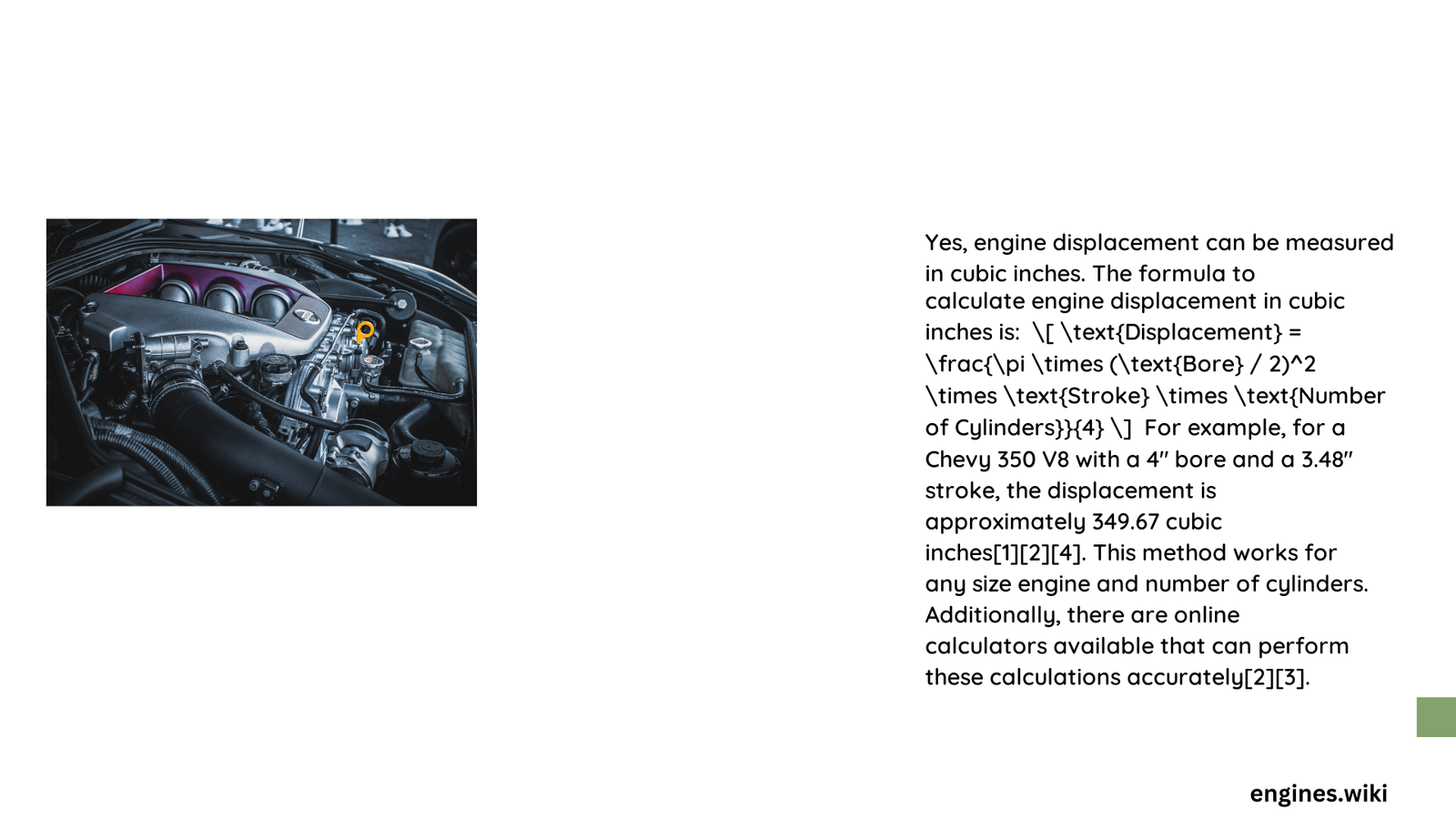Engine displacement represents the total volume of all cylinders in an internal combustion engine, traditionally measured in cubic inches across American automotive engineering. This critical metric determines an engine’s potential power output, fuel efficiency, and overall performance characteristics by quantifying the total air and fuel mixture volume an engine can process during a complete combustion cycle.
What Is the Standard Method for Measuring Engine Displacement?
The standard method for measuring engine displacement involves a precise mathematical calculation using fundamental geometric principles. Engineers utilize a specific formula that incorporates several key parameters:
[ \text{Displacement} = \pi / 4 \times D^2 \times L \times N ]
Key Parameters in Displacement Calculation
| Parameter | Symbol | Description |
|---|---|---|
| Bore Diameter | D | Cylinder’s internal diameter |
| Stroke Length | L | Distance piston travels |
| Number of Cylinders | N | Total cylinders in engine |
| Pi (Constant) | π | Approximately 3.1416 |
How Do Conversion Formulas Work?
Converting between different measurement units is crucial in automotive engineering. Here’s how cubic inches relate to other volume measurements:
- Conversion to Liters: 1 liter ≈ 61.02 cubic inches
- Calculation Method:
[ \text{Cubic Inches} = \text{Liters} \times 61.02 ]
Practical Conversion Examples
- 5.7-liter engine
-
Cubic inches: 5.7 × 61.02 = 347.814 cubic inches
-
6.2-liter engine
- Cubic inches: 6.2 × 61.02 = 378.324 cubic inches
What Performance Factors Depend on Displacement?

Engine displacement significantly influences multiple performance characteristics:
Power Output
- Larger displacement typically generates more power
- More air-fuel mixture volume enables greater energy production
- Example: 5.7-liter V8 produces substantially more power than 2.0-liter inline-4
Fuel Efficiency
- Larger engines generally consume more fuel
- Modern technologies like turbocharging and direct injection mitigate efficiency challenges
- Smaller, technologically advanced engines can match larger engines’ performance
Emission Considerations
- Displacement impacts carbon footprint
- Advanced emission control systems help mitigate environmental impact
- Smaller, turbocharged engines often produce fewer emissions
What Tools Measure Engine Displacement?
Precise measurement requires specialized equipment:
- Micrometers: Measure bore and stroke dimensions
- Digital Calipers: Ensure accurate dimensional measurements
- Engine Displacement Calculators: Software and online tools
- Goodson CC Measuring Kit: Laboratory-grade measurement equipment
What Challenges Exist in Displacement Measurement?
- Precision measurement requirements
- Complex geometric calculations
- Tool calibration maintenance
- Potential human error in calculations
Why Are Cubic Inches Still Relevant?
Despite metric system prevalence, cubic inches remain significant in:
– Classic American automotive engineering
– Muscle car and hot rod communities
– Vintage engine specifications
– Some performance automotive markets
Conclusion
Engine displacement measurement in cubic inches represents a sophisticated blend of mathematical precision and mechanical engineering. Understanding these calculations helps automotive professionals and enthusiasts comprehend engine performance characteristics comprehensively.
Reference:
- https://sourcetable.com/calculate/how-to-calculate-engine-cc-formula
- https://community.cartalk.com/t/formula-for-engine-displacement-cubic-inches/70962
- https://www.walkerexhaust.com/catalog/engine-conversion.html
